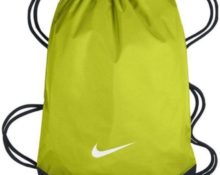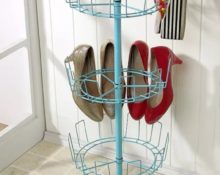Buying a new pair of shoes always brings special joy. However, the buyer may experience disappointment as the defect is discovered. It can appear both on the first day and after some time of use.
What are the defects in shoes?
There are 2 main reasons for the formation of shoe defects: violation of operating rules and non-compliance with production standards.
 The use of shoes directly depends on the consumer. Violations on the part of the consumer consist in the fact that the shoes were worn carelessly or were improperly cared for. Defects that are of a manufacturing nature are more difficult to determine. Sometimes they are hidden from view and only appear during operation. Manufacturing defects include:
The use of shoes directly depends on the consumer. Violations on the part of the consumer consist in the fact that the shoes were worn carelessly or were improperly cared for. Defects that are of a manufacturing nature are more difficult to determine. Sometimes they are hidden from view and only appear during operation. Manufacturing defects include:
- low-quality materials;
- non-compliance with pattern diagrams;
- unevenness of the lining fabric;
- various parameters of the same parts;
- incorrect assembly;
- poor-quality external finishing and fittings;
- uneven sole or insole;
- violation of packaging, transportation and storage.
It is important to highlight damage that can be caused both during operation and during production:
- cracks, creases or tears in the material;
- destruction of the line seam;
- the sole moving away from the top of the shoe;
- violation of the external parameters of the heel.
Such defects often cause conflict between buyer and seller.
Why do they appear?
 In the process of cutting parts, defective areas are identified on the material, which the craftsmen avoid. If, nevertheless, low-quality material was involved in the work and passed to the next stage, then during the inspection process it will be rejected by some other workshop. But By coincidence, such parts are rare, but go further to the process of painting and then assembly.
In the process of cutting parts, defective areas are identified on the material, which the craftsmen avoid. If, nevertheless, low-quality material was involved in the work and passed to the next stage, then during the inspection process it will be rejected by some other workshop. But By coincidence, such parts are rare, but go further to the process of painting and then assembly.
During the assembly process, defects arise due to incorrectly selected parts (that is, they may not fit in size). The assembler may also not follow the rules for bending allowances, the relative position of parts, and the choice of stitch pitch.
The next stage where a mistake may be made is connection of the sole and heel with the upper part of the product. The most obvious ones are: non-compliance with the spacing and standards of sole fastening, different heel heights, twisted or protruding nails and screws.
Failure to comply with transportation and storage rules may result in external mechanical damage. Improper storage often causes mold or stains on the outside and inside, as well as corrosion of metal elements.
The influence of defects on the operation and appearance of shoes
All stages of production performed with violations may cause defects in wearing in the future.
 Violation of standards when molding blanks has the greatest impact on the external characteristics and comfort of wearing shoes.. Defects in the workpieces include socks, vamps, boots, backs that are different in height and length, as well as their different stiffness. Due to the use of low-quality materials or due to violation of standards when cutting, there may be bumps, wrinkles, folds and even cracks on the surface, and in the inner part there may be unevenness and inaccuracies in the lining material. A fold in the insole can cause enormous discomfort when walking.
Violation of standards when molding blanks has the greatest impact on the external characteristics and comfort of wearing shoes.. Defects in the workpieces include socks, vamps, boots, backs that are different in height and length, as well as their different stiffness. Due to the use of low-quality materials or due to violation of standards when cutting, there may be bumps, wrinkles, folds and even cracks on the surface, and in the inner part there may be unevenness and inaccuracies in the lining material. A fold in the insole can cause enormous discomfort when walking.
During operation, poor fastening of the heel and sole and poor-quality fastening of fittings may be detected.
What is an examination and how is it carried out?
Minor defects can be corrected yourself, others require the work of a specialist. If a defect is found on a new pair of shoes, then it is possible to return or exchange the product. For this it is necessary to conduct an examination.
Important! An examination is a study carried out by a qualified specialist. During this procedure, not only the defect can be determined, but also the reasons for its occurrence.
 Often, the services of such specialists are sought to resolve conflict situations. The verification is carried out on the basis of an application from the buyer or seller. All activities carried out are described in regulatory documents. Both half pairs of shoes are used for the study. The inspection is carried out using the organoleptic method, that is, the shoes are examined and felt.. Next comes a magnifying glass, tweezers and basic measuring instruments. During the research process, the least qualitative one is identified, the data about which is entered into the act.
Often, the services of such specialists are sought to resolve conflict situations. The verification is carried out on the basis of an application from the buyer or seller. All activities carried out are described in regulatory documents. Both half pairs of shoes are used for the study. The inspection is carried out using the organoleptic method, that is, the shoes are examined and felt.. Next comes a magnifying glass, tweezers and basic measuring instruments. During the research process, the least qualitative one is identified, the data about which is entered into the act.
In accordance with the decision made, the consumer may demand:
- eliminate the defect at the expense of the seller;
- reduce the price based on quality;
- replace shoes with a new pair;
- refund the purchase.
It is much less common for the consumer to be proven at fault. In this case, the seller will not be held liable.
The defect may be invisible to the inexperienced eye of the buyer. When purchasing, it is important to take your time and fully inspect the item you are purchasing. Knowing the main defects, you can choose a quality pair and enjoy it for a long time.


 1
1





